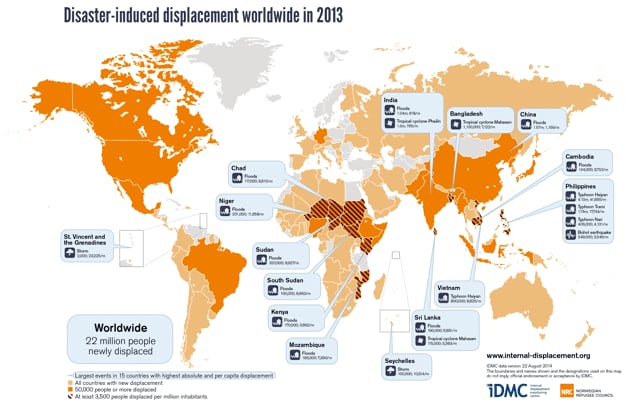The Earth’s climate is changing
The Earth’s climate is changing at an unprecedented rate, and the consequences are being felt around the world. Rising sea levels, extreme weather events, and environmental degradation are forcing millions of people to flee their homes in search of safety and survival. These individuals, often referred to as climate change refugees, are the human face of a global crisis that is only going to intensify in the years to come.
One of the most pressing threats facing climate change refugees is rising sea levels. Coastal communities around the world are increasingly vulnerable to flooding and erosion as sea levels rise. In many cases, entire islands and coastal regions are being inundated, forcing residents to abandon their homes and seek refuge elsewhere.
“We are now refugees in our own country, struggling to survive.”
— Sundarban villager
The Sundarbans, a vast mangrove forest delta shared by India and Bangladesh, is a prime example of this phenomenon. Rising sea levels and increased storm surges have inundated large areas of the delta, displacing hundreds of thousands of people.
“We have lost our homes, our livelihoods, and our way of life,” lamented Amina Begum, a resident of the Sundarbans who was forced to flee her village after it was inundated by a cyclone. “We are now refugees in our own country, struggling to survive.”

Extreme weather events
Extreme weather events, such as droughts, floods, and wildfires, are also displacing millions of people. In many parts of the world, droughts are becoming more frequent and severe, leading to crop failures and water shortages.
This has forced millions of farmers and pastoralists to abandon their land in search of more fertile ground and reliable water sources. In some cases, entire communities are being forced to migrate due to the devastating impacts of drought.
Wildfires, fuelled by climate change, are also causing widespread displacement. In recent years, wildfires have ravaged vast swaths of land in North America, Australia, and other parts of the world, destroying homes, livelihoods, and entire ecosystems.
These fires have forced millions of people to flee their homes, often with little more than the clothes on their backs. Many of these displaced individuals are left homeless and destitute, struggling to rebuild their lives in the aftermath of the disaster.
Environmental degradation is another major driver of displacement. Deforestation, desertification, and soil erosion are degrading land and making it increasingly difficult to support human populations.
In many parts of the world, deforestation is destroying vital ecosystems and reducing the availability of water and other natural resources. This is forcing millions of people to abandon their homes in search of more sustainable livelihoods.
Desertification, the process by which fertile land is transformed into desert, is also a major driver of displacement. As deserts expand, arable land becomes increasingly scarce, forcing farmers and pastoralists to migrate in search of more productive land.
Soil erosion, caused by deforestation, overgrazing, and unsustainable agricultural practices, is also degrading land and reducing its productivity. This is leading to declining crop yields and increasing food insecurity, forcing many people to abandon their homes in search of more fertile land.

The plight of climate change refugees is a complex and multifaceted challenge. These individuals face a range of obstacles, including:
- Lack of legal status:
- Many climate change refugees lack legal status in their host countries, leaving them vulnerable to exploitation and discrimination.
- Limited access to resources:
- Climate change refugees often lack access to basic necessities such as food, water, shelter, and healthcare.
- Psychological trauma:
- The experience of displacement can be traumatic, leading to anxiety, depression, and other mental health problems.
- Integration challenges:
- Integrating into a new community can be difficult, particularly for those who do not speak the local language or have limited skills.
Addressing the needs of climate change refugees requires a multi‑pronged approach. This includes:
- Reducing greenhouse gas emissions:
- The most effective way to address the root causes of climate change is to reduce greenhouse gas emissions. This requires a global effort to transition to clean energy sources, improve energy efficiency, and reduce deforestation.
- Investing in adaptation and resilience:
- Investing in adaptation and resilience measures can help communities to cope with the impacts of climate change and reduce displacement. This includes measures such as seawalls, early warning systems, and drought‑resistant crops.
- Providing humanitarian assistance:
- Providing humanitarian assistance to climate change refugees is crucial to ensuring their basic needs are met. This includes providing food, water, shelter, and healthcare.
- Developing legal frameworks:
- Developing legal frameworks to protect the rights of climate change refugees is essential. This includes providing them with legal status and access to basic services.
- Promoting international cooperation:
- Addressing the challenges of climate change requires international cooperation. This includes sharing best practices, mobilising financial resources, and developing global agreements to reduce emissions and promote adaptation.
A stark reminder
The plight of climate change refugees is a stark reminder of the human cost of a warming planet. As the Earth’s climate continues to change, the number of people displaced by climate change is only likely to increase.
Addressing this growing humanitarian crisis requires urgent and concerted action from the global community. By reducing greenhouse gas emissions, investing in adaptation and resilience, and providing humanitarian assistance, we can help to ensure that climate change refugees have a safe and dignified future.










Would you like to comment on this article?
Sign up (it's quick and free) or sign in now.
Please read our Comment Policy before commenting.